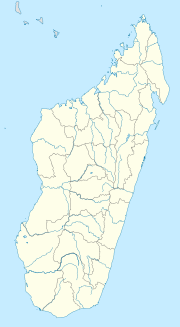포로레틴
Phloretin | |
| 이름 | |
|---|---|
| 우선 IUPAC 이름 3-(4-히드록시페닐)-1-(2,4,6-트리히드록시페닐)프로판-1-온 | |
| 기타 이름 디히드로나링게닌 프롤레톨 | |
| 식별자 | |
3D 모델(JSmol) | |
| 체비 | |
| 켐스파이더 | |
| ECHA 정보 카드 | 100.000.444 |
PubChem CID | |
| 유니 | |
CompTox 대시보드 (EPA ) | |
| |
| |
| 특성. | |
| C15H14O5 | |
| 몰 질량 | 274.272 g/120−1 |
달리 명시되지 않은 한 표준 상태(25°C[77°F], 100kPa)의 재료에 대한 데이터가 제공됩니다. | |
폴레틴은 천연 페놀의 일종인 디히드로칼콘이다.사과나무[1] 잎과 만주 살구나무에서 [2]볼 수 있다.
대사
랫드에서 섭취된 프롤리진은 [3][4]소장에서 가수분해 효소에 의해 클로레틴으로 전환된다.클로레틴 가수분해효소는 클로레틴을 클로레틴산과 플로로글루시놀로 가수분해한다.
약리학적 연구
동물모델에서 클로레틴은 글리코사이드 프롤리진에 [5]비해 억제력이 약하지만 SGLT1 및 SGLT2에 의해 세포에 대한 포도당의 활성수송을 억제했다.이것의 중요한 효과는 소장에[4] 의한 포도당 흡수 억제와 신장 포도당 [3]재흡수 억제이다.또한 클로레틴은 다양한 요소 운반체를 [6][7]억제한다.고단백질 식단과 결합하면 요소 손실과 이뇨를 유발합니다.포로레틴은 고지방 [8]식단을 섭취한 생쥐에서 체중 증가를 억제하고 신진대사의 항상성을 향상시키는 것으로 밝혀졌다.클로레틴은 쥐의 [9]간세포에서 아쿠아포린9(AQP9)를 억제한다.
나노 입자 합성
Pht-GNPs(Pht-GNPs)는 단일 단계 합성법을 사용하여 합성되어 항암 활성을 시험하였다.Pht-GNP는 유리 클로레틴에 [10]비해 유의미한 암세포 독성을 보였다.
글리코사이드류
- 플로리진은 클로레틴의 2'-글루코사이드이다
- 나링긴 디히드로칼콘은 클로레틴의 디글리코사이드이다
「 」를 참조해 주세요.
레퍼런스
- ^ Picinelli A.; Dapena E.; Mangas J. J. (1995). "Polyphenolic pattern in apple tree leaves in relation to scab resistance. A preliminary study". Journal of Agricultural and Food Chemistry. 43 (8): 2273–2278. doi:10.1021/jf00056a057.
- ^ "Manchurian Apricot (Prunus armeniaca var. mandshurica)" (PDF). North Dakota State University. Retrieved January 30, 2014.
- ^ a b Idris, I.; Donnelly, R. (2009). "Sodium-glucose co-transporter-2 inhibitors: An emerging new class of oral antidiabetic drug". Diabetes, Obesity and Metabolism. 11 (2): 79–88. doi:10.1111/j.1463-1326.2008.00982.x. PMID 19125776.
- ^ a b Crespy, V.; Aprikian, O.; Morand, C.; Besson, C.; Manach, C.; Demigné, C.; Rémésy, C. (2001). "Bioavailability of phloretin and phloridzin in rats". The Journal of Nutrition. 131 (12): 3227–3230. doi:10.1093/jn/131.12.3227. PMID 11739871.
- ^ Chan, Stephen S.; William D. Lotspeich (1962-12-01). "Comparative effects of phlorizin and phloretin on glucose transport in the cat kidney". American Journal of Physiology. Legacy Content. 203 (6): 975–979. doi:10.1152/ajplegacy.1962.203.6.975. ISSN 0002-9513. PMID 14019989. Retrieved 2012-10-21.
- ^ Fenton, Robert A.; Chung-Lin Chou; Gavin S. Stewart; Craig P. Smith; Mark A. Knepper (2004-05-11). "Urinary concentrating defect in mice with selective deletion of phloretin-sensitive urea transporters in the renal collecting duct". Proceedings of the National Academy of Sciences of the United States of America. 101 (19): 7469–7474. Bibcode:2004PNAS..101.7469F. doi:10.1073/pnas.0401704101. ISSN 0027-8424. PMC 409942. PMID 15123796.
- ^ Shayakul, Chairat; Hiroyasu Tsukaguchi; Urs V. Berger; Matthias A. Hediger (2001-03-01). "Molecular characterization of a novel urea transporter from kidney inner medullary collecting ducts". American Journal of Physiology. Renal Physiology. 280 (3): F487–F494. doi:10.1152/ajprenal.2001.280.3.f487. ISSN 1931-857X. PMID 11181411. Archived from the original on 2016-03-04. Retrieved 2012-10-21.
- ^ Alsanea, Sary; Gao, Mingming; Liu, Dexi (May 2017). "Phloretin Prevents High-Fat Diet-Induced Obesity and Improves Metabolic Homeostasis". The AAPS Journal. 19 (3): 797–805. doi:10.1208/s12248-017-0053-0. ISSN 1550-7416. PMID 28197827. S2CID 3638970.
- ^ Fenton, Robert A.; Chou, Chung-Lin; Stewart, Gavin S.; Smith, Craig P.; Knepper, Mark A. (2004-05-11). "Urinary concentrating defect in mice with selective deletion of phloretin-sensitive urea transporters in the renal collecting duct". Proceedings of the National Academy of Sciences of the United States of America. 101 (19): 7469–7474. Bibcode:2004PNAS..101.7469F. doi:10.1073/pnas.0401704101. ISSN 0027-8424. PMC 409942. PMID 15123796.
- ^ Payne NJ, Badwaik VD, Waghwani HK, Moolani HV, Tockstein S, Thompson DH, Dakshinamurthy R (March 2018). "Development of dihydrochalcone-functionalized gold nanoparticles for augmented antineoplastic activity". International Journal of Nanomedicine. 13: 1917–1926. doi:10.2147/IJN.S143506. PMID 29636609.


